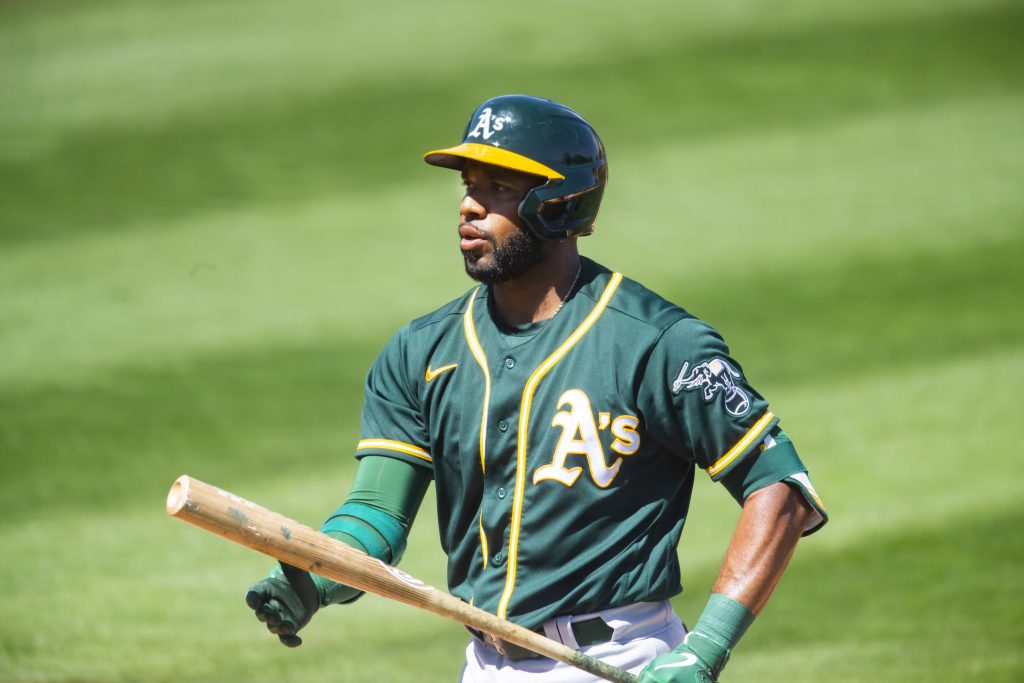
The Athletics were quiet in the pre-lockout portion of the 2021-22 offseason, but by all accounts they’re readying for a teardown that will see the core of their 2017-21 teams dispersed throughout the league as they look to retool and stockpile young talent. General manager David Forst readily acknowledged this reality, telling reporters early in the offseason: “This is the cycle for the A’s. We have to listen and be open to whatever comes out of this. This is our lot in Oakland until it’s not.”
As one would expect, much of the focus has been on the big names who’ll be highly coveted by other clubs: Matt Olson, Matt Chapman, Sean Manaea, Chris Bassitt, Frankie Montas. Both Ramon Laureano and Sean Murphy have been mentioned at least speculatively, but they’re controlled through 2024 and 2025, respectively, whereas that initial quintet is either up for free agency next winter (Manaea, Bassitt) or following the 2023 season (Olson, Chapman, Montas).
While the focus on those players is understandable, the A’s also would surely welcome the opportunity to be rid of their remaining obligations to shortstop Elvis Andrus and outfielder Stephen Piscotty. Both are signed through the 2022 season with 2023 club options on contracts that are generally viewed as underwater. With several clubs still eyeing shortstop help, Andrus has come up as a speculative piece in some larger deals. The New York Post’s Joel Sherman, for example, has written about the concept of the Yankees taking on Andrus as part of a larger deal to acquire Olson. CBS Sports’ Mike Axisa suggested a similar idea for the Jays if they look into Chapman.
The problem in suggesting an Andrus trade in any shape or size is twofold, however. First and most obviously is the simple fact that Andrus’ bat has been dormant for four years now. In 2016-17, his age-27 and age-28 seasons, Andrus hit a combined .299/.348/.457 with good defense and plus value on the basepaths. He looked like one of the most well-rounded shortstops in the game. Since then, he’s batted a combined .255/.302/.360 over the course of 1728 plate appearances.
Secondly and more problematic, however, is Andrus’ contract. The 2022 season is the final year of Andrus’ eight-year, $120MM contract originally signed with the Rangers. He’s owed $14MM this coming season, although the Rangers are on the hook for $7.25MM of that sum.
An effective one-year deal for Andrus at $6.75MM isn’t particularly appealing but also isn’t so burdensome that a team in need of a stopgap at short would automatically turn up its nose. Andrus still went 12-for-14 in stolen bases and drew generally plus marks for his baserunning at FanGraphs. Defensive Runs Saved has him pegged as a below-average defender at this point, but Outs Above Average and Ultimate Zone Rating disagree.
The larger wrinkles are that his $15MM club option for the 2023 season could become a player option and that his initial trade from Texas to Oakland triggered a conditional full no-trade clause, which now gives him veto power over any deal.
Andrus’ contract stipulates that his 2023 option will convert to a player option if he is both traded (check) and then accumulates 550 plate appearances in the 2022 season. The 550 plate appearances is an eminently reachable platform as well, particularly for Andrus. While his 2021 season ended with a leg fracture sustained during the final weekend of play, he’s expected to be ready for Spring Training and quite likely would’ve reached 550 in 2021 were it not for that late injury. Andrus also averaged 625 plate appearances per season in the decade from 2010-19, so there’s good reason to think he’ll be able to reach those 550 trips to the plate next year.
Granted, a team could try to acquire Andrus with the idea of limiting his role, but that might not sit well with Andrus, who’s in line for regular at-bats in Oakland and has to approve any trade. The notion of giving Andrus everyday reps for a good chunk of the season and then curbing his playing time as that 550-PA threshold approaches is also tricky, as that sort of direct playing-time manipulation to avoid contractual milestones can lead to a grievance filing against the team. Even absent a grievance, that tactic isn’t likely to go unnoticed by other players; it’s the sort of thing that can work against a team in future free-agent discussions, extension talks or trade scenarios involving other players with no-trade protection.
All that said, it’s also worth noting that the vesting player option could very well enhance Oakland’s motivation to move on from Andrus. Because he’s already been traded once, that 550 plate appearance threshold applies even if Andrus remains in green and gold. The A’s, too, could simply opt to move on from Andrus in Spring Training or amid any early struggles that arise, and they have a shortstop-in-waiting in the form of defensive wizard Nick Allen — a 2017 third-round pick who ranks among the organization’s top farmhands. If Andrus does open the year in Oakland, his playing time will be worth close monitoring as the season wears on.
However things play out, Oakland would likely welcome the opportunity to move on from Andrus, who was only acquired in a swap of bad contracts in the first place. His trade candidacy isn’t as straightforward as most “bad contract” swaps, however. That vesting player option in his deal is should be kept in mind for fans of any team who might be eyeing Andrus as a counterweight to balance the scales in a trade involving Olson, Chapman, Manaea, etc., and that no-trade protection gives Andrus a good bit of leverage.
Credit : Source link






